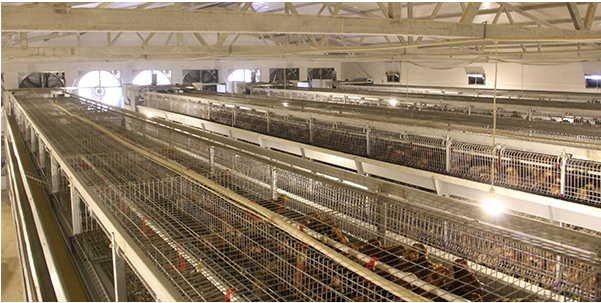What mineral elements are needed when using layer cages to raise chickens?
- font size
- Be the first to comment!
When using layer chicken cages to raise chickens, farmers need to pay attention: the mineral elements in the chicken body are about 4%, most of which are in the bones and teeth. The minerals in eggs account for 1.7%, most of which are concentrated in the shell. Therefore, the mineral requirements of chickens, especially for laying hens, are quite high. There are many types of mineral elements, but 14 are commonly used in chicken production, of which 7 are calcium, phosphorus, sulfur, magnesium, chlorine, potassium, and sodium, which are used in large amounts. However, iron, copper, manganese, zinc, iodine, selenium, and diamond are used in small amounts and are called trace elements.
In the past, chicken farming was mostly free-range, and the soil outside was rich in mineral elements, so chickens could eat freely. At present, the chicken industry has gradually developed into large-scale intensive breeding, which is often found in the breeding process of using layer cages to raise chickens. Deficiency occurs due to lack of a certain substance, so mineral elements are increasingly being valued and used by people.
Among these elements, chickens require the most calcium and phosphorus. The main role of calcium and phosphorus is to form bones, teeth and eggshells. Calcium is necessary for blood clotting and for normal heart function along with sodium and potassium. Chicks suffer from schondrosis when they are calcium-deficient; when layers are calcium-deficient, their eggshells become thinner, reducing egg production, and even shellless eggs appear.

Phosphorus participates in the metabolism of carbohydrates and fats and maintains the body's acid-base balance. When phosphorus is deficient, chickens lose their appetite and grow slowly. In severe cases, joints harden and bones are fragile.
Sodium can keep chicken digestive juice alkaline and help digestive enzyme activity.
The vertical function is to maintain the acidity of the gastric juice. In the absence of salt, chickens will have bad habits such as pecking the anus and eating blood. The weight and egg weight of the laying hens will be reduced, and the egg production rate will decrease.
Manganese is related to the growth of bones and the reproduction of chickens. When manganese is insufficient, the bones of the chicks are underdeveloped, and they are prone to bend legs and hinder growth. The lack of manganese in adult chickens results in low egg production and hatchability and thinner eggshells.
The content of zinc in chickens is very small, but it is widely distributed. Bone, hair, liver, pancreas, kidney, muscle and enzymes all contain zinc.
When chickens are deficient in zinc, their growth is slow, feathers and skin are stunted. In severe cases, their feet are short, the surface is scaly, and there is dermatitis.
Iron exists in certain oxidases in hemoglobin and tissue cells. Anemia is prone to occur when iron is insufficient.
Copper and iron participate in the formation of hemoglobin. When the feed is lacking in copper, iron is malabsorption and anemia also occurs.
Iodine is related to thyroid function, and iodine deficiency can cause goiter.
Selenium can treat chicken's exudative diathesis, pancreatic degeneration and turkey muscular stomach and myocardial dystrophy. The United States and Canada generally recommend adding selenium to the diet of chicks.
The above is the trace elements that farmers need to pay attention to when using commercial poultry farming equipment to raise chickens. Please raise them carefully.


